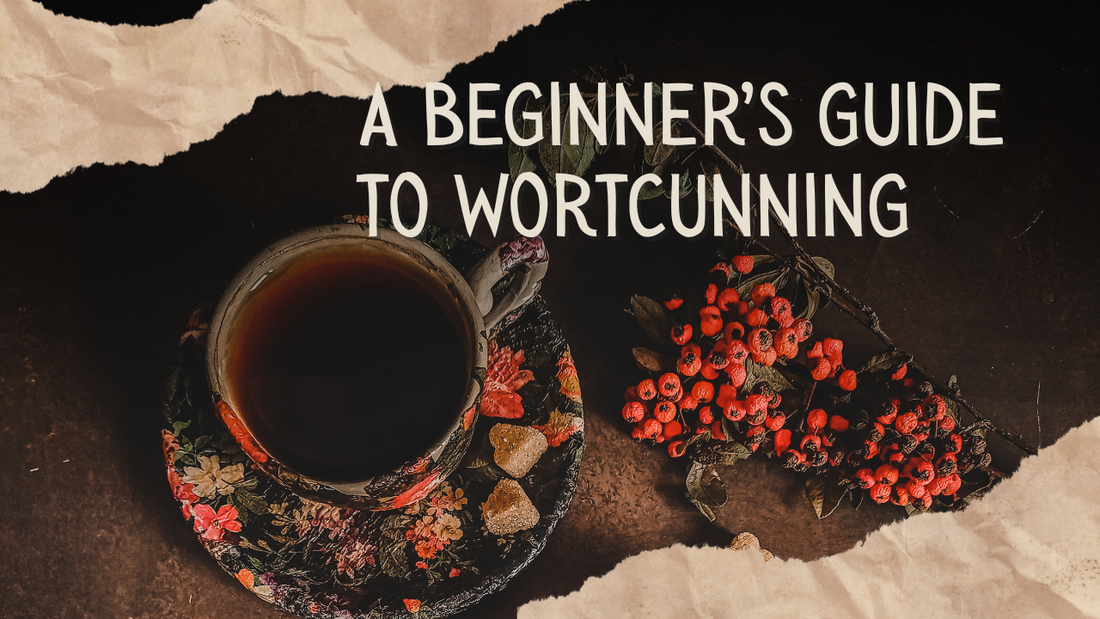Wortcunning might sound like something out of a dusty old grimoire, but it’s simply the traditional practice of working with plants — for healing, magic, and everyday life. Long before essential oils were trendy or “plant magic” became an aesthetic, people gathered herbs with intention, whispered charms into the leaves, and trusted the green world to guide them.
Whether you’re just starting out or looking to root your practice in older soil, here’s a guide to the basics of wortcunning — minus the fluff.
What Does “Wortcunning” Actually Mean?
The word wort is an Old English term for “plant” or “herb,” and cunning refers to knowledge or skill. So a wortcunner is quite literally someone “skilled in herbs.” In folk tradition, they were often the ones neighbors turned to for salves, teas, charms, or protection from the evil eye.
Wortcunning is part herbalism, part folklore, and part magic — rooted in observation, ancestral knowledge, and relationship with the land.
Wortcunning vs. New Age Herbalism
There’s nothing wrong with modern wellness trends, but traditional wortcunning is a little different:
| Wortcunning | New Age Herbalism |
| Based in folk knowledge & local tradition | Often blends global systems |
| Uses common plants like mugwort, nettle, elder | Focus on exotic or rare plants |
| Rituals and charms tied to seasons, spirits, and land | Often detached from cultural roots |
| Practical magic: healing, protection, banishing, dream work | Focus on energy balancing, vibration, chakras |
5 Plants to Start Your Wortcunning Practice
You don’t need to memorize 300 herbs. Here are five powerful, easy-to-grow or forage plants to start with:
- Mugwort – For dreams, spirit work, and protection.
- Nettle – A warrior plant. Painful to touch, but deeply nourishing.
- Elder – Both healing and dangerous. Respect is key.
- Rosemary – Memory, cleansing, and home protection.
- Yarrow – Wound healing, divination, and psychic shielding.
→ Many of these can be found dried in our apothecary section.
How to Work with Herbs the Traditional Way
You don’t need a PhD or a perfect greenhouse. Wortcunning is accessible and slow magic.
✧ Drying & Storing
- Hang bundles upside down in a cool, dark place.
- Use brown paper bags or glass jars to store.
- Label with name + date of harvest.
✧ Blessing & Use
- Speak aloud when you gather. A simple “thank you” matters.
- Burn, brew, anoint, or carry in charm bags.
- Trust your gut — intuition is part of the skill.
A Simple Mugwort Dream Charm
You’ll need:
- A small cloth bag
- Dried mugwort
- A slip of paper with a symbol or dream intention
🔮 Place under your pillow. Mugwort is known for vivid dreams and spirit messages.
→ Find a mugwort-based dream ointment in our shop.
FAQs: Wortcunning for Beginners
Can I practice wortcunning if I live in the city?
Yes! Start with potted herbs on a windowsill or buy dried plants. Local walks can yield surprising finds.
Is this the same as green witchcraft?
There’s overlap, but wortcunning is more specific — it's plant-focused, rooted in folk traditions, and often passed down in oral form.
What if I don’t know Latin plant names?
No worries. Folk names work just fine. Yarrow is yarrow. Learn what’s relevant to you.
Final Thoughts
Wortcunning is slow, grounded magic. It’s not about hoarding jars or crafting the perfect aesthetic altar — it’s about learning to notice, to ask, and to respect the wild wisdom all around you.
Ready to start your journey? Explore our Apothecary collection for dream herbs, protection bundles, and handcrafted oils made in the spirit of traditional plant magic.
Or browse our Witchcraft Tools for bones, bags, and more.

